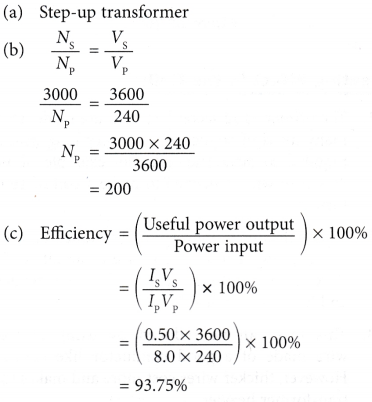What are the Losses in a Transformer?
Energy Losses in a Transformer:
- In a real transformer, some energy is lost in the transformer.
- The output power is less than the input power. Therefore the efficiency of the transformer is less than 100%.
- There are four main causes for the loss of power in the transformer as illustrated in figure.
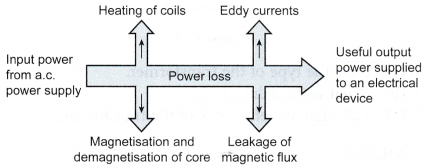
Heating Effect in the Coils
- The primary and secondary coils are made up of many turns of copper wire. A very long wire is required to make the coils. For example, about 200 m of wire is needed to make a coil of 1600 turns.
- Although copper is a very good conductor, a wire of such length has a resistance of about 40 Ω. When a current flows in the coil, heat is generated and lost at a rate of I2R.
- This loss can be reduced by using thicker wire made of a good conductor like copper. However, thicker wires cost more and makes the transformer heavier.
What is eddy current loss in a transformer?
Eddy Currents in the Iron Core:
- Eddy currents are induced currents that swirl inside a conductor.
- The changing magnetic field produced by the alternating current in the coils induces eddy currents in the soft iron core. These eddy currents produce heating in the core and cause further loss of power.
Eddy currents are reduced by using a laminated core. It is made up of a number of thin iron sheets glued together with thin layers of insulation between them. Eddy currents are not able to flow through the layers of insulation.
Magnetisation and Demagnetisation of the Core:
- The core is continually magnetised and demagnetised by the changing magnetic field. Some energy is transformed into heat in the core. This energy loss is reduced by using soft iron for the core.
- Soft iron loses almost all its magnetism when it is demagnetised and it requires less energy to be magnetised.
Leakage of Magnetic Flux
- The magnetic flux produced by the primary current is not completely linked to the secondary coil. This leakage of magnetic flux means that some of the input energy is not transferred to the output of the transformer.
- This loss can be reduced by winding the secondary coil on top of the primary coil. Figure shows a laminated core with a more efficient design that reduces leakage of magnetic flux.
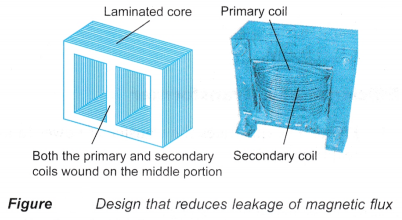
People also ask
- How Does a Transformer Work?
- What is the electromagnetic induction?
- What is magnetic force on a current carrying conductor?
- What factors affect the strength of an electromagnet?
- What is the Meaning of Magnetic Force?
- What Is Magnetic Effect Of Electric Current?
- Oersted Experiment on Magnetic Effect of Current
- How do you Determine the Direction of the Magnetic Field?
What is the ?
- Figure illustrates the transfer of power in a real transformer.
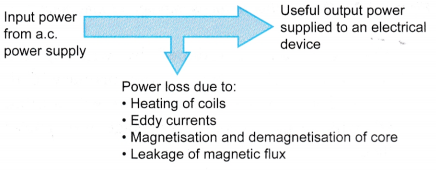
- The efficiency of the transformer is given by:

- A transformer is a very efficient electrical device. A well-designed transformer can have an efficiency greater than 90%.
Transformer Efficiency Example Problem
Figure shows a transformer in a high voltage power supply.
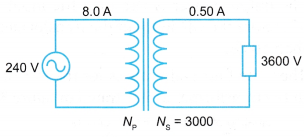
(a) State the type of the transformer.
(b) What is the value of Np?
(c) Calculate the efficiency of the transformer.
Solution:
